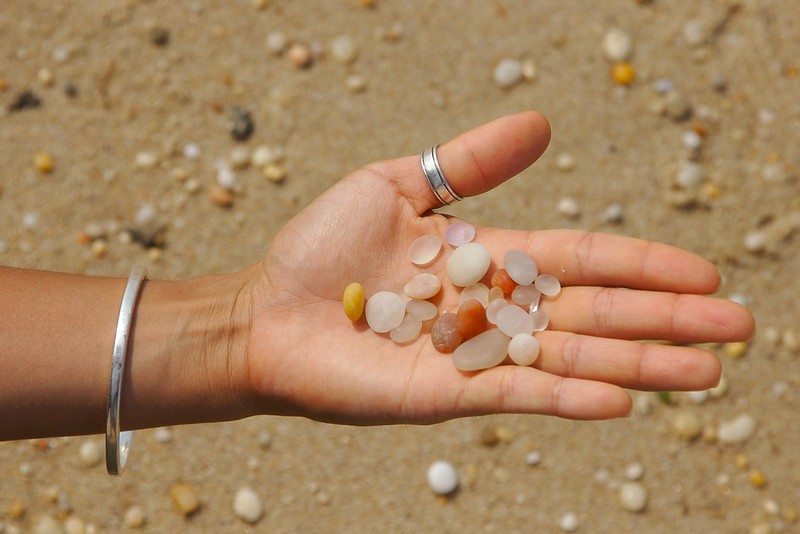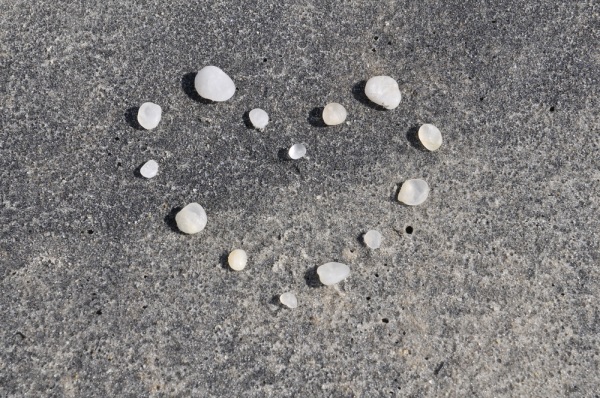Imagine strolling along a serene beach, the waves gently lapping at the shore, when suddenly, you spot a glimmer in the sand. It’s not just any pebble, but a Cape May Diamond, a gemstone that carries with it a blend of natural beauty, intriguing history, and a touch of mystery. These clear, rounded cobbles, often mistaken for real diamonds, are a unique treasure found along the shores of Cape May. Highly collectible and a staple in local shops, their deceptive name and fascinating origin make them an enthralling subject for explorers and collectors alike.
So, what exactly are Cape May Diamonds, and where can they be found? Join us as we delve into the world of these captivating stones and discover how you can find your own piece of this natural wonder.

What Are Cape May Diamonds?
Cape May Diamonds are not true diamonds, but rather quartz crystals that can be found along the beaches of Cape May, New Jersey. These naturally occurring stones are actually clear quartz crystals that have been smoothed and polished by the action of water and sand over a long period of time. They are typically found along the Delaware Bay in Cape May Point, New Jersey.
The name “Cape May Diamonds” comes from their diamond-like appearance once they have been polished and cut, although they are much softer than real diamonds. The size of these quartz pebbles can vary from very small (like grains of sand) to the size of a golf ball or larger. They have been collected and treasured by locals and tourists for years, often used in jewelry and as decorative items.
Historically, these stones held significance for the local Kechemeche tribe, a part of the Lenni-Lenape nation, who valued them for trading and believed they had spiritual importance. Today, they serve as a unique and interesting aspect of Cape May’s natural and cultural heritage.
Cape May Diamonds can also appear as a few different colors on occasion, ranging from pale blue to pale pink. It just depends on the individual stone.
Not a True Diamond At All
Contrary to their name, Cape May Diamonds are another of the wide variety of quartz crystal that show up and get called diamonds. In some cases, such as the double-terminated Herkimer diamonds, it kind of makes sense. In this case, it’s largely just a name to draw attention to them.
What They Look Like
Cape May Diamonds have a frosted exterior for the same reason that sea glass does: erosion from sand and water.
After the crystals are loosed into the waters, they are then slowly ground down into a smooth shape. This can take hundreds of years. The mechanism is simple abrasion, sand consists largely of silica varieties (often quartz) and is equal in hardness to the quartz crystals.
Over time, the repeated action of water and sand particles abrades the exterior of the stone. Essentially, it’s a really rough sanding job performed by nature over the course of a couple of human lifetimes.
How They’re Formed

The original take was that a large boulder off-shore was the source of the quartz crystals found on the beaches. Eventually, someone actually found a still-formed crystal which negated that theory.
Currently, the source of the quartz that ends up as Cape May Diamonds is thought to be in the upper reaches of the Delaware River. The crystals are washed down from this location, then end up in the ocean where they’re even further eroded after their tumultuous journey down the river.
At first glance, not every Cape May Diamond is remarkable. The frosted exterior may make them look like other rough beach cobbles. They’re often tumbled for sale to tourists, which results in a much clearer stone and a view of the inclusions on the inside of the quartz.
Peter Heaney, a professor of geosciences at Penn State University, provides insights into the formation of Cape May Diamonds. He explains, “Quartz in its absolutely pure pristine state is transparent,” and hypothesizes that the Cape May Diamonds form as veins inside of rocks, crystallizing from hot fluids, which results in lower concentrations of defects and a clear appearance.
They were previously traded and used as gifts by the local tribes, specifically the Kechemeche. It appears that they attached value to these stones, considering them good luck charms. They weren’t revealed to Europeans until 1690, when a fortune-seeking whaler began to trade for them.
These days, they’re a common find in tourist shops in the area. They’re sold as rough cobbles, with a sea glass-like appearance, as tumbles with a smoother surface and higher clarity, and even as cut gemstones. The latter were once reputed to be good enough to fool gemologists, although that’s likely the stuff of urban legend due to how easy it is to separate the 7.0 on the Moh’s quartz from the 10.0 of diamond.
After all, hardness testing is recorded as far back as Pliny the Elder’s work in roughly 77AD.
Still, the mystique and unique appeal of these stones is hard to beat. While they’re not diamonds, they remain collectible and are sold in many forms. These quartz crystals get around.
What’s Considered Desirable in a Cape May Diamond?
While there’s no official grading system, people do have their preferences when it comes to these sea-worked pieces of quartz.
In general, those with high transparency when “raw” are the most desirable. Many of them will have a yellowish tint or internal inclusions that render them a milky white.
The other colors that occasionally show up are still highly sought after, since they’re very rare compared to the white and yellow stones that commonly wash up.
And, of course, it’s the clear ones that are cut into faceted gemstones and sold at shops in the area as “real” Cape May Diamonds.
Where to Find Cape May Diamonds
Cape May Diamonds can be found all along the shores of Cape May in New Jersey, but they show up in particular on two beaches.
The first is Sunset Beach. This is a popular location with beachcombers in general, who often find their little treasures along the sands bordering the sea.
About 150 feet off the shoreline, a WWI-era concrete battleship sank. The ship, known as the SS Atlantus, broke its mooring and wrecked in 1926. The strong tidal pulls in the area, combined with the concrete hull of the ship, have created a zone where things wash ashore often.
The area also holds the world birding record if you want to get a double dose of nature. The stern of the ship is still visible at times, although most of the ship has long since eroded and fallen the seafloor where it forms a man-made rock reef.
The other beach where they’re particularly common is Higbee Beach. While less historic, Cape May Diamonds are commonly found in the surf. It seems to be the more pleasant of the two as far as normal beach activities are concerned, but it’s a common hunting ground for both locals and tourists.
That means you may want to arrive early with the first change in tide to avoid the crowds if you’re after these rounded quartz treasures.
According to Kathy Hume from Sunset Beach Gift Shops, “The best time to hunt is on cold, windy days when the water is churned up and just after storms.” Hume also offers tips for prospectors, suggesting they come equipped with a beach bucket, sand shovel, and a beach sieve to sift through the sand.
Lapidary Tips For Working With Cape May Diamonds
Cape May Diamonds have the distinction of being one of the few varieties of clear quartz that are often cut into faceted gemstones, but most often they’re simply tumbled and sold that way.
Like all quartz, they’re a fairly simple material to work. It’s just time-consuming due to the hardness of the material.
They can be worked as any other form of quartz crystal, there don’t seem to be any particular oddities that show up with them. Your regular wheels, sandpaper, or tumbler will be more than enough to handle them.
Just be aware they also don’t have any more intrinsic value than other forms of quartz outside of the tourist areas where they’re sold as souvenirs. If you’re just looking for something to cut, I’d recommend finding cheaper forms of quartz that don’t have the tourist premium attached to them unless you’re collecting them yourself.
That said, they remain a favorite for many people and their provenance is the biggest selling point, so removing them from their naturally eroded state isn’t always the best move.
Discover More About Visiting Cape May
For those planning a visit or simply curious about what else this picturesque locale has in store, I highly recommend exploring Cape May’s official tourism website. Here, you’ll find a treasure trove of resources to help you plan your trip. From cozy accommodations and delightful dining options to a calendar of events and guides to the area’s rich history and natural beauty, this website is your gateway to an unforgettable Cape May experience.
Whether you’re a beachcomber eager to hunt for your own Cape May Diamonds, a history enthusiast keen to delve into the area’s past, or someone looking to relax in a scenic seaside town, Cape May has something special for everyone.

